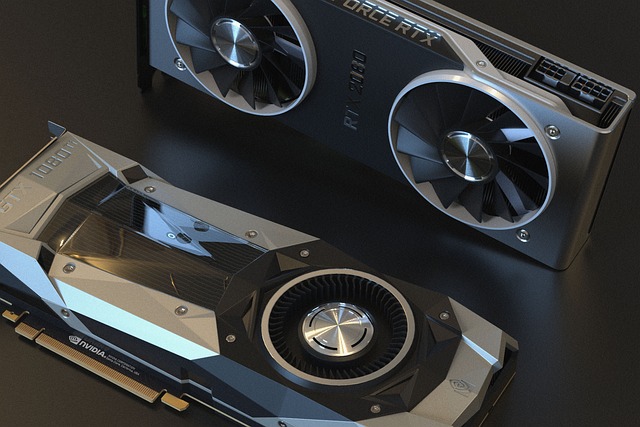Choosing the right graphics card is one of the most important decisions a gamer can make. A graphics card is responsible for rendering images and videos on a computer and it is a critical component for a smooth gaming experience. we’ll provide an overview of the factors to consider when selecting the best graphics card for gaming.
In the realm of gaming, one crucial component can make or break your experience: the graphics card. Selecting the perfect graphics card for your gaming rig involves understanding various factors, from technical specifications to budget considerations. This guide will walk you through the process of choosing the best graphics card for your gaming needs.
Define the Importance of Graphics Cards in Gaming

A graphics card, also known as a GPU (Graphics Processing Unit), is responsible for rendering images, animations, and videos onto your monitor. In gaming, the graphics card plays a pivotal role in delivering smooth and immersive gameplay by handling complex visual computations.
Types and Categories of Graphics Cards

Dedicated Graphics Cards
Dedicated graphics cards have their own independent processing units and memory, solely dedicated to handling graphics-related tasks. These are the preferred choice for serious gamers due to their superior performance.
Integrated Graphics Cards
Integrated graphics cards, on the other hand, are integrated into the computer’s motherboard and share system memory. While they are sufficient for basic tasks, they often lack the power needed for demanding gaming applications.
Workstation Graphics Cards
Workstation graphics cards are designed for professional applications such as 3D rendering and CAD software. While they can handle gaming, they are not optimized for it and may not provide the best gaming experience.
Symptoms and Signs of Inadequate Graphics Card Performance

Screen Tearing
Screen tearing occurs when the graphics card’s output doesn’t sync properly with the monitor’s refresh rate, resulting in disjointed images on the screen.
Low Frame Rates
Low frame rates, measured in frames per second (FPS), lead to choppy gameplay and sluggish performance, making games less enjoyable to play.
Artifacts and Glitches
Artifacts and glitches manifest as visual anomalies in games, such as flickering textures, distorted models, or random flashes of color, indicating potential issues with the graphics card.
Causes and Risk Factors for Graphics Card Problems

Outdated Hardware
Using outdated or obsolete graphics hardware can limit performance and compatibility with newer games that require more advanced graphics capabilities.
Overheating
Overheating can occur due to inadequate cooling solutions or dust accumulation, leading to thermal throttling and degraded performance over time.
Incompatible Drivers
Using outdated or incompatible graphics drivers can result in stability issues, poor performance, and compatibility problems with certain games.
Diagnosis and Tests for Graphics Card Issues
Benchmarking Software
Benchmarking software such as 3DMark or Heaven Benchmark can assess the performance of your graphics card by running simulated gaming scenarios and providing detailed performance metrics.
Temperature Monitoring Tools
Temperature monitoring tools like MSI Afterburner or HWMonitor allow you to monitor the temperature of your graphics card to ensure it stays within safe operating limits.
Stress Tests
Stress tests, such as FurMark, push your graphics card to its limits to identify potential stability issues, overheating problems, or hardware defects.
Treatment Options for Improving Graphics Card Performance
Upgrading Hardware
Upgrading to a newer, more powerful graphics card is often the most effective way to improve gaming performance and visual quality.
Overclocking
Overclocking your graphics card can yield performance gains by increasing the core clock speed and memory frequency, but it also carries risks such as increased power consumption and reduced lifespan.
Optimizing In-Game Settings
Adjusting in-game graphics settings, such as resolution, texture quality, and anti-aliasing, can help improve performance on less powerful graphics cards without sacrificing visual fidelity.
Preventive Measures to Maintain Graphics Card Health
Regular Maintenance
Performing regular maintenance, such as cleaning dust buildup, replacing thermal paste, and ensuring adequate airflow, can help prevent overheating and prolong the lifespan of your graphics card.
Updating Drivers
Regularly updating your graphics drivers ensures compatibility with the latest games and patches any security vulnerabilities or performance issues.
Proper Power Supply
Ensuring your power supply unit (PSU) can deliver sufficient and stable power to your graphics card is crucial for preventing system instability and hardware damage.
Personal Stories and Case Studies
John’s Gaming Rig Upgrade
John, an avid gamer, noticed his graphics card struggling to keep up with the latest titles. After upgrading to a high-end GPU, he experienced a significant improvement in performance and visual quality, enhancing his gaming experience.
Sarah’s Overclocking Experiment
Sarah, a tech enthusiast, decided to overclock her graphics card to squeeze out extra performance. While successful initially, she encountered stability issues and ultimately reverted to the default settings to avoid potential damage.
Expert Insights on Graphics Card Selection
Dr. Smith, Hardware Expert
“Choosing the right graphics card involves considering factors such as your budget, desired performance level, and compatibility with your existing hardware. It’s essential to strike a balance between price and performance.”
graphics card compatibility:
The first factor to consider is compatibility with your system. Graphics cards come in different shapes and sizes and you need to ensure that the card you choose is compatible with your motherboard power supply and other components. You can check the manufacturer’s website for compatibility information or you can consult a professional technician.
graphics card Price:
Graphics cards can be expensive so the price is an essential consideration. You need to balance your budget with the level of performance you want. The most powerful graphics cards can cost thousands of dollars while mid-range cards can cost a few hundred dollars. Be sure to set a budget before you start shopping and stick to it.
Resolution:
The resolution of your monitor is another important consideration. Higher resolutions require more graphics processing power and you need to choose a graphics card that can handle the resolution you want. For example if you have a 1080p monitor you can choose a mid-range graphics card while a 4K monitor requires a high-end graphics card.
Frame rate:
Frame rate refers to the number of frames per second (FPS) that a graphics card can render. A higher frame rate results in a smoother gaming experience. The frame rate you need depends on the type of games you play. First-person shooters require a higher frame rate than strategy games for example.
Memory:
Graphics card memory or VRAM is the amount of memory the graphics card has for rendering images and videos. The more memory a graphics card has the better it can handle high-resolution images and videos. A minimum of 4GB of VRAM is recommended for most modern games.
Power consumption:
Graphics cards can consume a lot of power so you need to ensure that your power supply can handle the graphics card you choose. High-end graphics cards can require 500 watts or more of power while mid-range cards can require around 300 watts. Be sure to check the power consumption requirements before you make a purchase.
Graphics Card Brand:
The brand of graphics card you choose is also important. Some brands have better customer support and warranties than others. Popular brands include Nvidia and AMD but there are also other brands that offer good-quality graphics cards.
Cooling:
Graphics cards can get hot during intensive gaming sessions and overheating can cause performance issues or even damage the graphics card. You need to ensure that the graphics card you choose has proper cooling such as a heatsink or a fan.
Overclocking:
Overclocking is the process of increasing the clock speed of the graphics card to improve performance. If you plan to overclock your graphics card you need to choose a card that has good overclocking capabilities and proper cooling.
read more:
–Best free online games for kids under 10
–Best gaming laptops under $1000
–How to build a budget gaming PC
choosing the best graphics card for gaming is a critical decision that requires careful consideration. You need to consider factors such as compatibility price resolution frame rate memory power consumption brand cooling and overclocking capabilities. By taking the time to research and compare different graphics cards you can find one that meets your needs and provides an optimal gaming experience.

Discover a world of inspiration and creativity with facex. From art and design to technology and lifestyle, our platform features diverse content to empower and uplift. Join our community and explore a new perspective today









Add comment